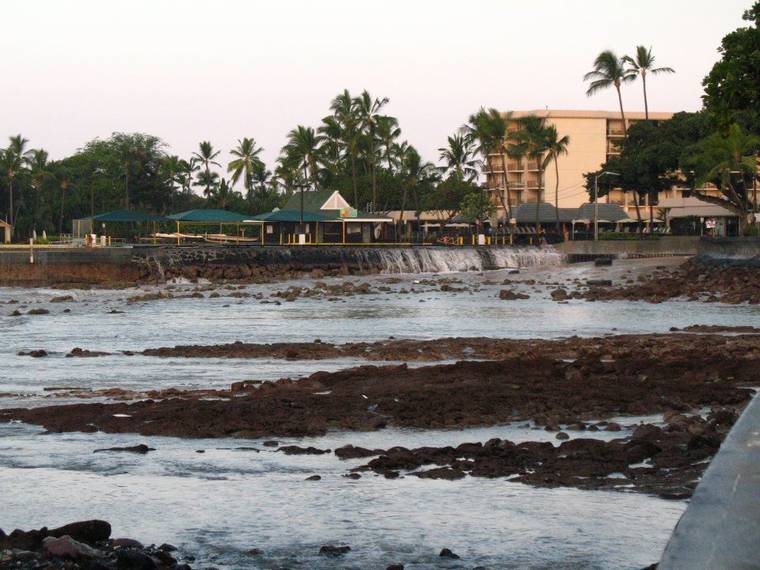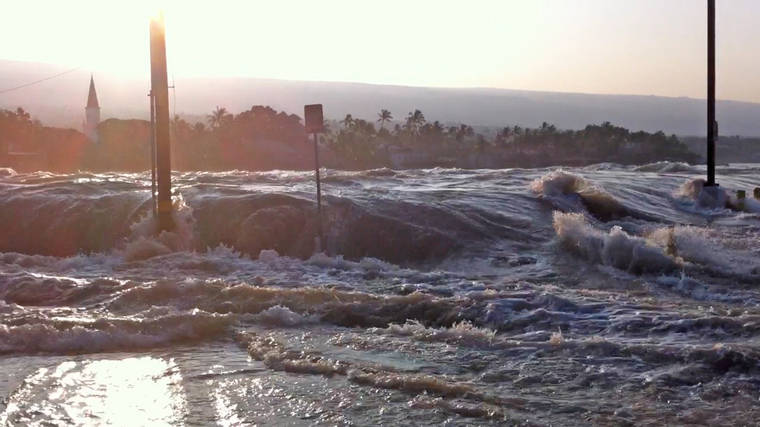Today marks the 10th anniversary of the March 11, 2011, earthquake and subsequent tsunami that hit nations across the Pacific, including U.S. territories and state of Hawaii.
On March 11, 2011, at 2:46 p.m. Japan local time, a magnitude-9.0 earthquake occurred off the northeastern coast of Honshu, Japan, that generated a devastating tsunami. Total damage was estimated at $220 billion, making it the most expensive disaster in history.
It was the largest magnitude earthquake ever in Japan and is the fourth largest in the world since 1900. In many coastal towns, waves flooded to at least third floor. About a half-million homes were completely or partial destroyed, and about 500,000 people displaced. Over 18,000 people died — nearly all from the relentless tsunami waves.
The earthquake generated a Pacific-wide tsunami, reaching Hawaii, and causing extensive damage to private and public property in the counties of Honolulu, Maui, and Hawaii. Over 200 waves were recorded in varying heights. The counties sustained damage of approximately $7.5 million, equating to over $8.725 million in 2021 dollars. Former-President Barack Obama declared the event a major disaster for the state on April 8, 2011.
^
Since this incident, the Hawaii Emergency Management Agency (HI-EMA), in coordination with the counties, the University of Hawaii system, the Federal Emergency Management Agency (FEMA), and the United States Coast Guard (USCG) have taken major steps to mitigate impacts to the state, enhance communications networks, improve awareness, and prepare for whenever the next tsunami may occur.
Hawaii has become the first jurisdiction in the United States to implement tsunami evacuation maps for emergency response operations. The 2011 Tohoku tsunami prompted the development of extreme inundation scenarios beyond what can be inferred from historical records, and county emergency management augmented the evacuation maps with a second hazard zone delineated by modeled tsunamis from potential magnitude- 9.3 and 9.6 earthquakes. These can be located in the front pages of your local telephone book, as well as at https://dod.hawaii.gov/hiema/public-resources/tsunami-evacuation-zone/.
Hawaii also has created the largest outdoor warning siren system in the United States. Across the islands there are 410 warning sirens installed with with 76 state-of-the-art sirens to be added, increasing coverage statewide. The new, standardized, electronic sirens are battery powered with a photovoltaic solar charging system and have redundant cellular/satellite communications. Additionally, 73 existing legacy sirens are to be upgraded.
Further, data has been developed to facilitate delineation of offshore refuge areas, where vessels are evacuated to during a tsunami warning.
The HI-EMA recommends every resident to take steps now to prepare for any emergency by doing the following:
Pack a 14-day “Go-To-Kit” for your family
• Change of clothes and sturdy shoes
• 1 gallon of water per person per day
• Non-perishable foods
• Masks, gloves, and sanitizer
• First aid kit
• Battery powered or crank powered radio
• Flashlight
• Batteries
• Manual can opener
• Hygiene supplies
• Whistle
• Important documents
Make a plan
• Plan escape routes – ensure all family members know where to go and how to get out
• Meeting place – choose a physical location to meet if communication between family members is down
• Family communication – identify a family member who lives out-of-state who everyone can notify when they are safe
After a strong or long earthquake, a tsunami may follow. If you feel the ground shake:
• Drop, cover and hold on
• Evacuate quickly on foot to high ground or far inland
• Wait for local officials to advise on cautionary re-entry
Sign up for Emergency Notifications
• Visit https://www.hawaiicounty.gov/departments/civil-defense for free text-based notifications for the latest updates on natural disasters and man-made emergencies
For more information please visit www.ready.hawaii.gov





